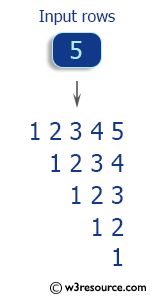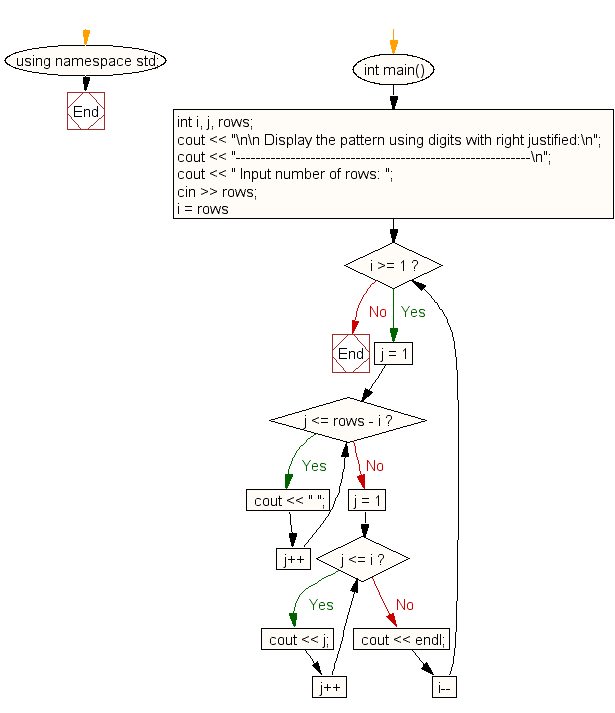C++ Exercises: Display the pattern using digits with right justified and the highest columns appears in first row
51. Right-Justified Descending Pattern
Write a C++ program that displays the pattern with the highest columns in the first row and digits with the right justified digits.
Visual Presentation:

Sample Solution:
C++ Code :
#include <iostream> // Include the input/output stream library
using namespace std; // Using standard namespace
int main() // Main function where the execution of the program starts
{
int i, j, rows; // Declare integer variables i, j, and rows
// Display message asking for input
cout << "\n\n Display the pattern using digits with right justified:\n";
cout << "-----------------------------------------------------------\n";
cout << " Input number of rows: ";
cin >> rows; // Read input for the number of rows from the user
for (i = rows; i >= 1; i--) // Loop for the number of rows in reverse order
{
for (j = 1; j <= rows - i; j++) // Loop to print spaces before the digits
cout << " "; // Print a space for formatting
for (j = 1; j <= i; j++) // Loop to print digits in ascending order
cout << j; // Print the digits
cout << endl; // Move to the next line after each row is printed
}
}
Sample Output:
Display the pattern using digits with right justified:
-----------------------------------------------------------
Input number of rows: 5
12345
1234
123
12
1
Flowchart:

For more Practice: Solve these Related Problems:
- Write a C++ program to print a descending number pattern where the numbers are right justified, decreasing by one digit each row.
- Write a C++ program that reads n and prints rows of numbers in descending order with leading spaces to right-align the digits.
- Write a C++ program to output a pattern of numbers that decreases in length per row and is right aligned using formatted output.
- Write a C++ program to generate a right-justified pattern where the first row contains n digits and each subsequent row is indented further.
Go to:
PREV : Descending Column Pattern.
NEXT : Left-Justified Descending Pattern.
C++ Code Editor:
Contribute your code and comments through Disqus.
What is the difficulty level of this exercise?
